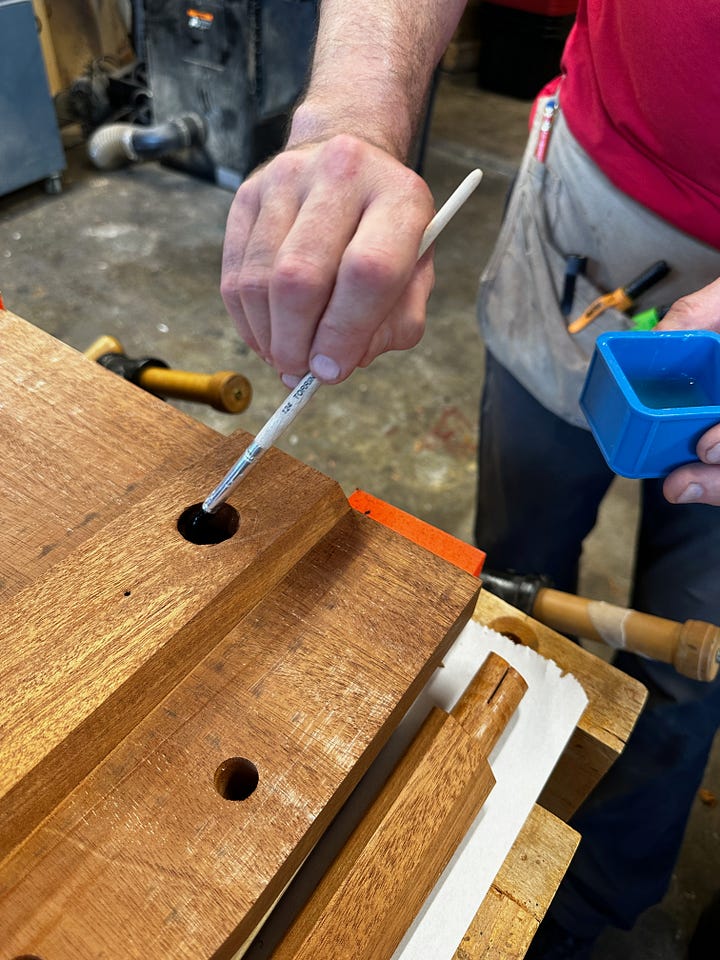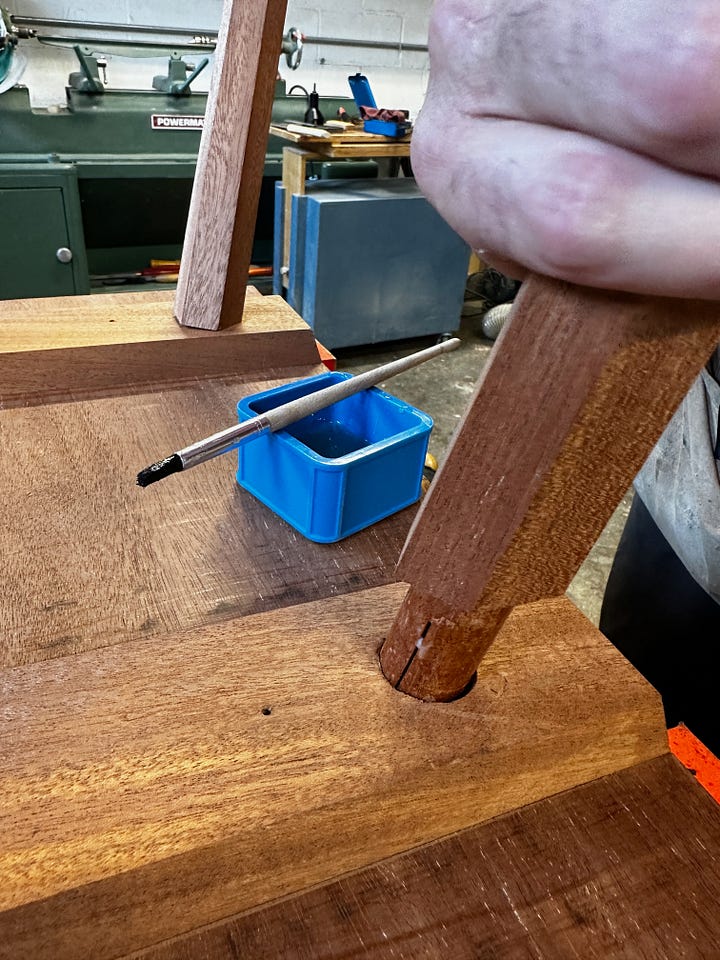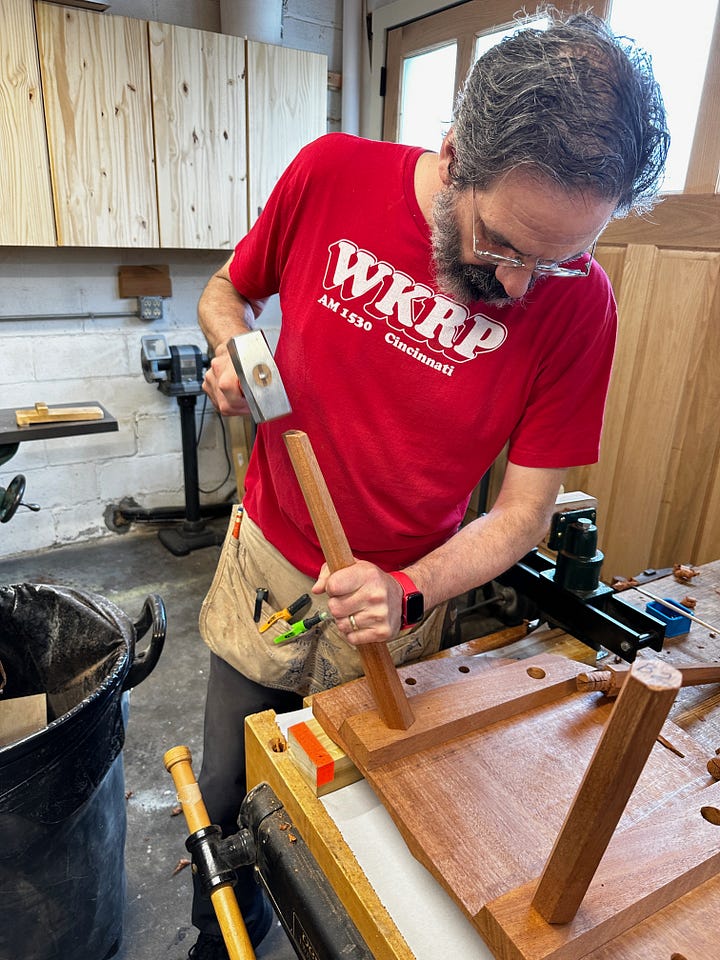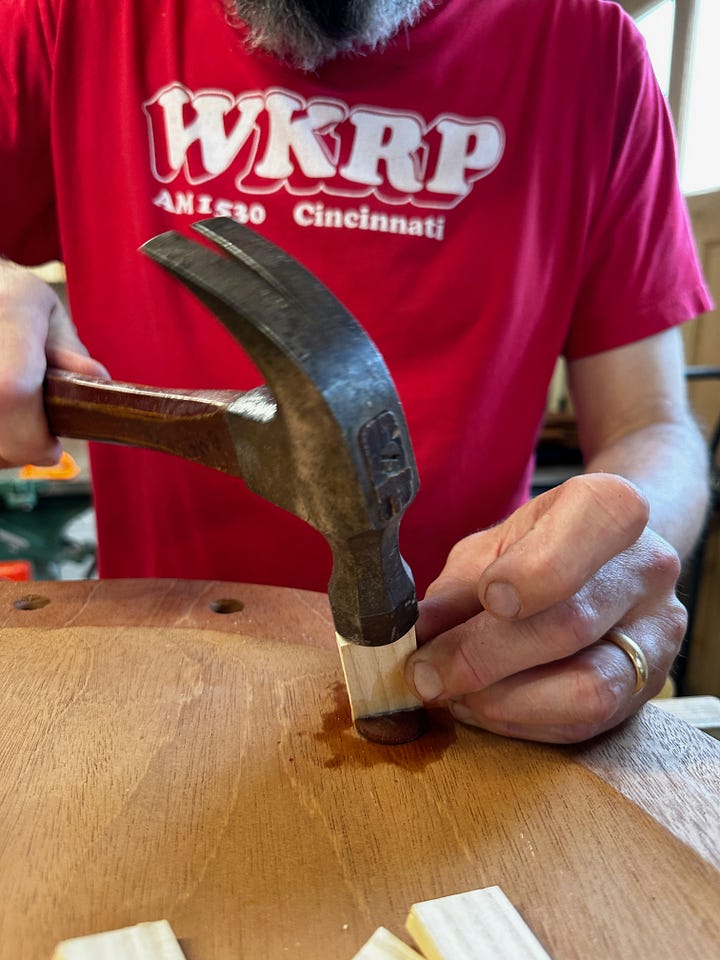Note: I updated the full-size patterns because I neglected to include the mortise for the backsplat. The new file can be downloaded below the paywall.
Gluing the legs into the seat is straightforward. But here’s my No. 1 caution: If the joint is even a little tight, I think you should compress it1 before assembly. If the tenon isn’t compressed, the joint could lock up when the water in your glue2 makes everything swell.
After compressing and kerfing the tenons, it’s time to glue up.




Because there are no stretchers, you can glue each leg individually. Paint glue in the mortise. Paint a thin coat of glue on the tenon. Drive the leg in. Rotate it so the tenon’s shoulders land squarely on the batten.
After gluing all four legs, look for glue drips before you turn the chair over and wedge the tenons. Glue likes to drip.


Wedge the tenons and clean off the squeeze-out using a toothbrush and hot water.
After the glue cures, saw the tenons as close to the seat as you can, then use a scorp or shallow-s…
Keep reading with a 7-day free trial
Subscribe to The American Peasant to keep reading this post and get 7 days of free access to the full post archives.




